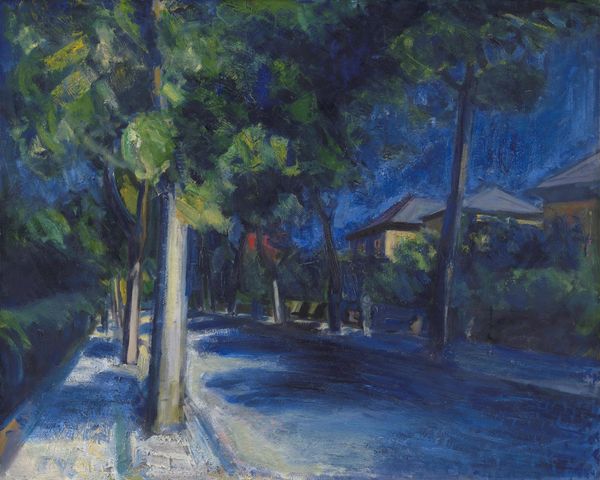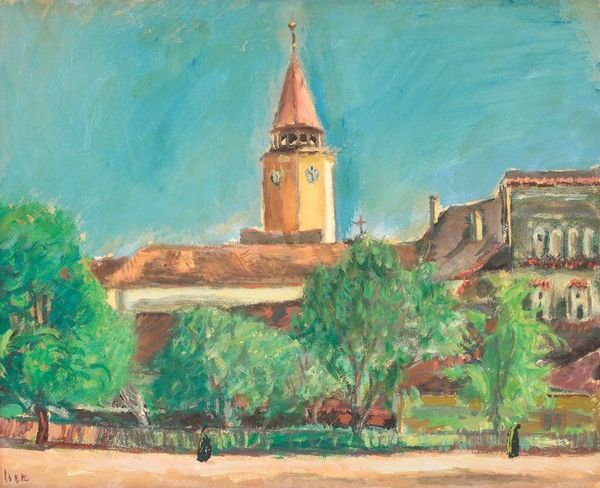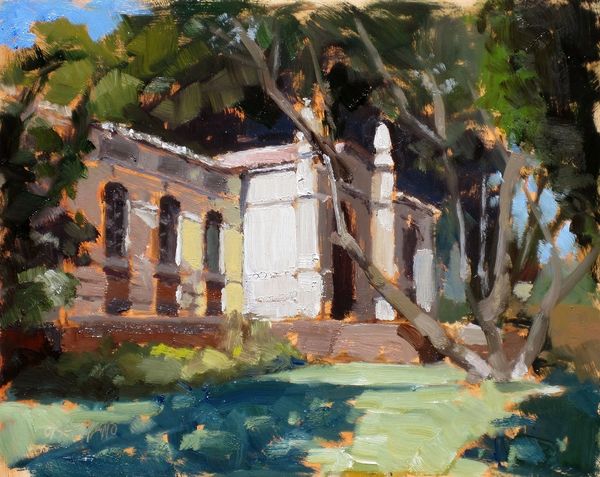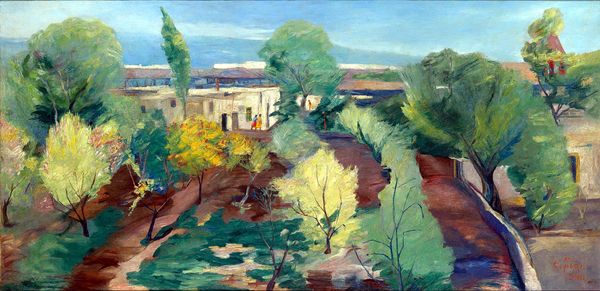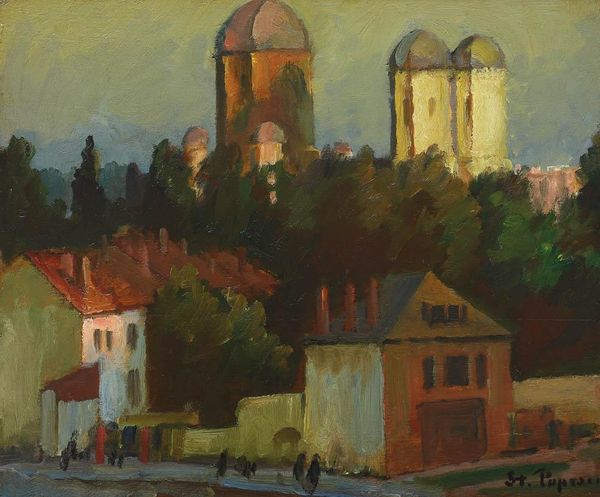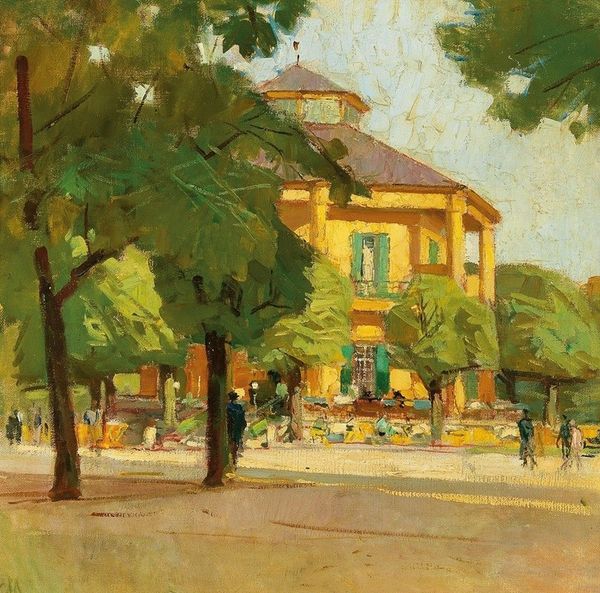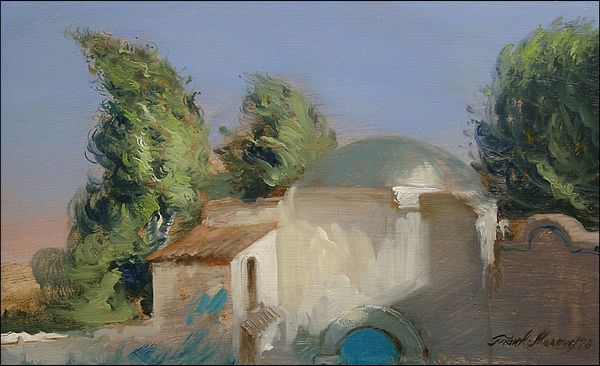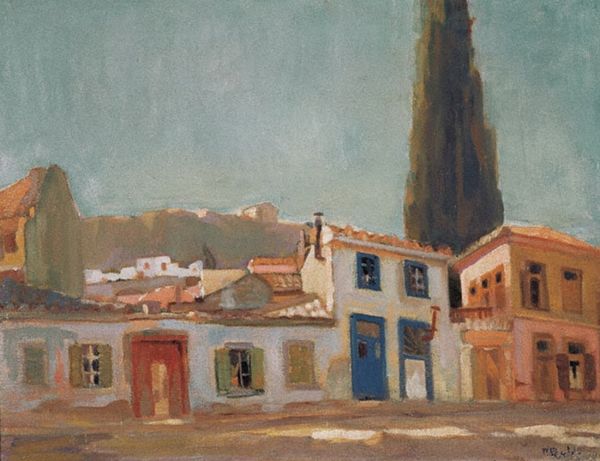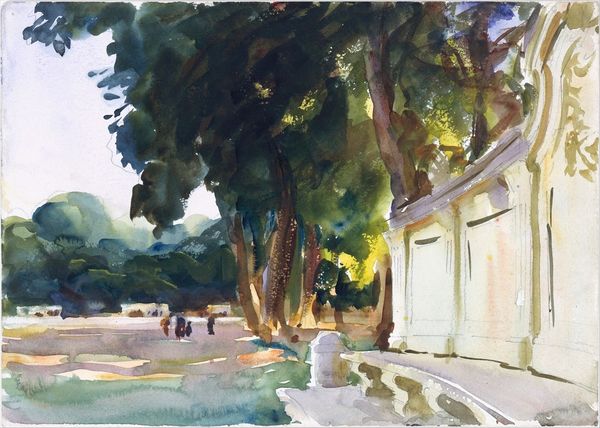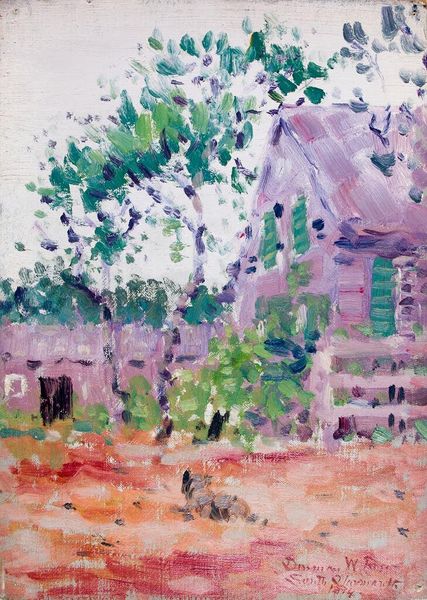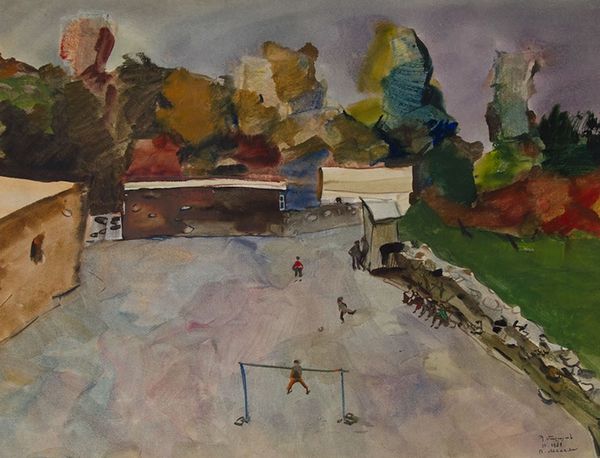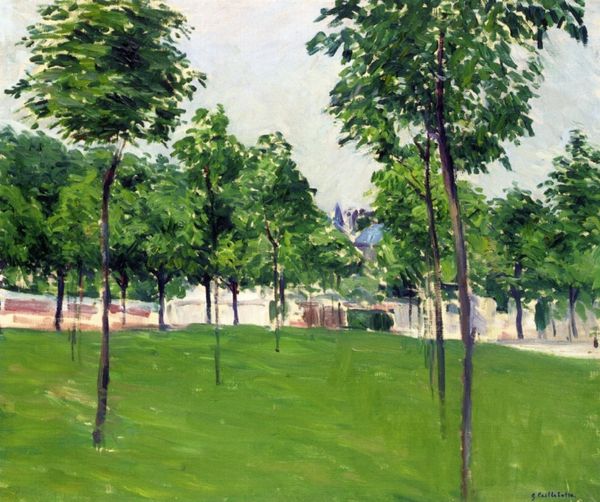
Copyright: Petros Malayan,Fair Use
Curator: This painting, "Next to Opera Theater, Etude," was created by Petros Malayan in 1954 using oil paint. What’s your first take? Editor: A kind of urban reverie, I'd say. The subdued palette and those simplified forms evoke a quiet, almost melancholic mood. There's a figure walking, seemingly lost in thought... the dome in the background could represent higher thinking perhaps, or contemplation. Curator: It's intriguing to consider the social context of this piece. Armenia in 1954, still within the Soviet Union, with prescribed artistic styles. Malayan, however, leans towards a post-impressionistic, even modernist approach. The subject matter, too - the opera house - what did that space mean to the public then? Editor: Opera houses often symbolize cultural aspiration and civic pride. Here, though, the dome almost looms over the plaza, hinting at something more... authoritarian perhaps. The trees partly obscure its base which brings some comfort and sense of protection. Curator: Indeed. While the Impressionists often focused on leisure and fleeting moments, here, in the Soviet context, everyday life had a specific performative role. Even in a landscape painting, the individual's place within society feels palpable. There's not an excess of colour like earlier landscape pieces and everything feels rather controlled in some ways. Editor: I notice the way the artist depicts light, almost like a memory. And this lone individual – they seem dwarfed, yes, within this wide space dominated by stone and architecture, like he doesn't belong to anyone or any place in particular. Yet, they are rendered with care. Curator: That tension between the individual and the collective feels potent in light of the sociopolitical era. We're looking at a state that espouses collectivism, but within which the individual experience persists, maybe quietly defiant or even resistant, on a micro scale. Editor: Well, thinking about the building and lone figure in that space makes me now appreciate that moment of someone in an every-day walk under watchful eye; not free-roaming and not totally suppressed either. It's nice that these city squares allow freedom of speech even by those simply occupying the ground while being there. Curator: Exactly, and hopefully as people visit these squares to appreciate art it makes them wonder where it may all lead. Thanks! Editor: You too!
Comments
No comments
Be the first to comment and join the conversation on the ultimate creative platform.
